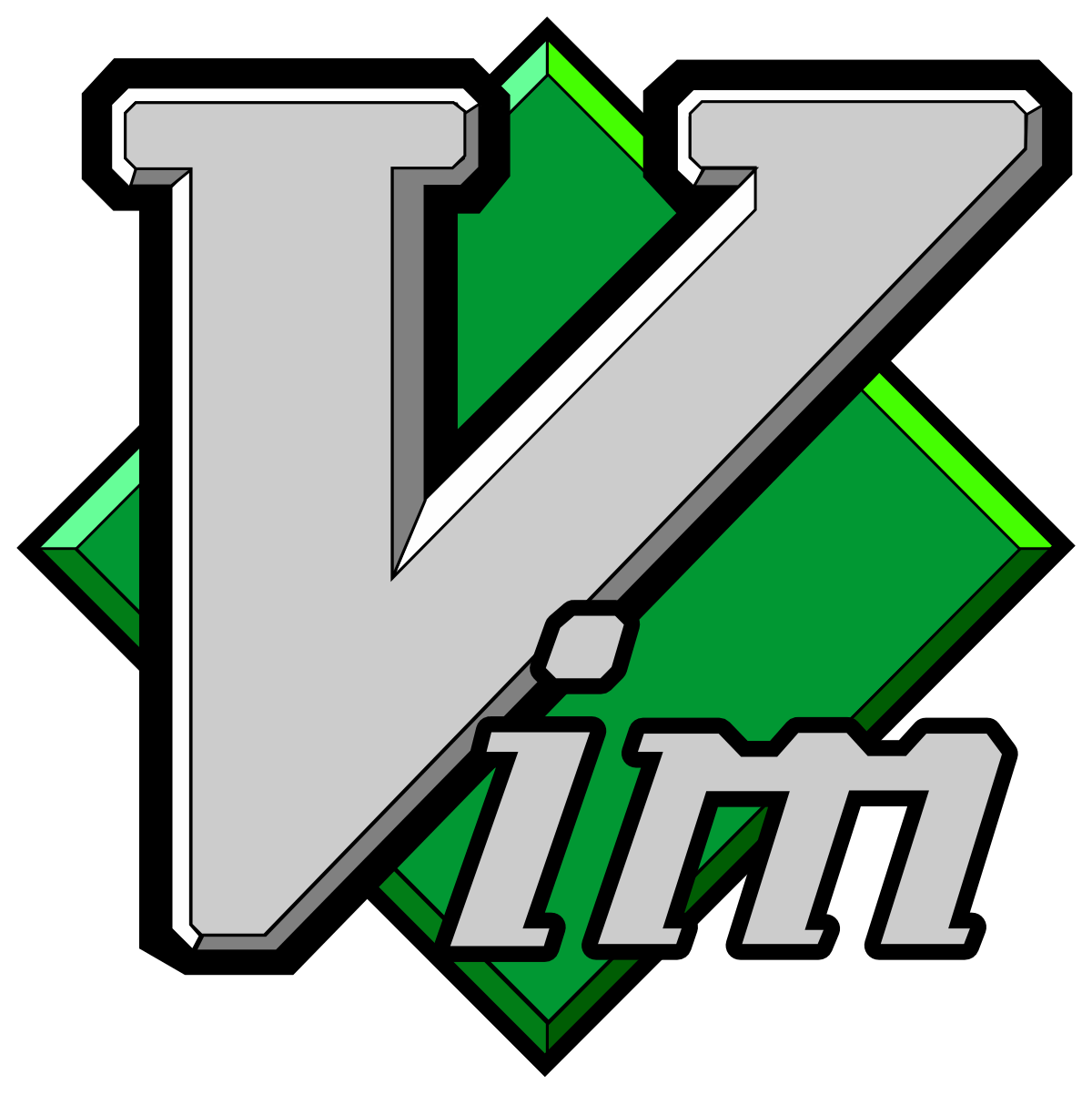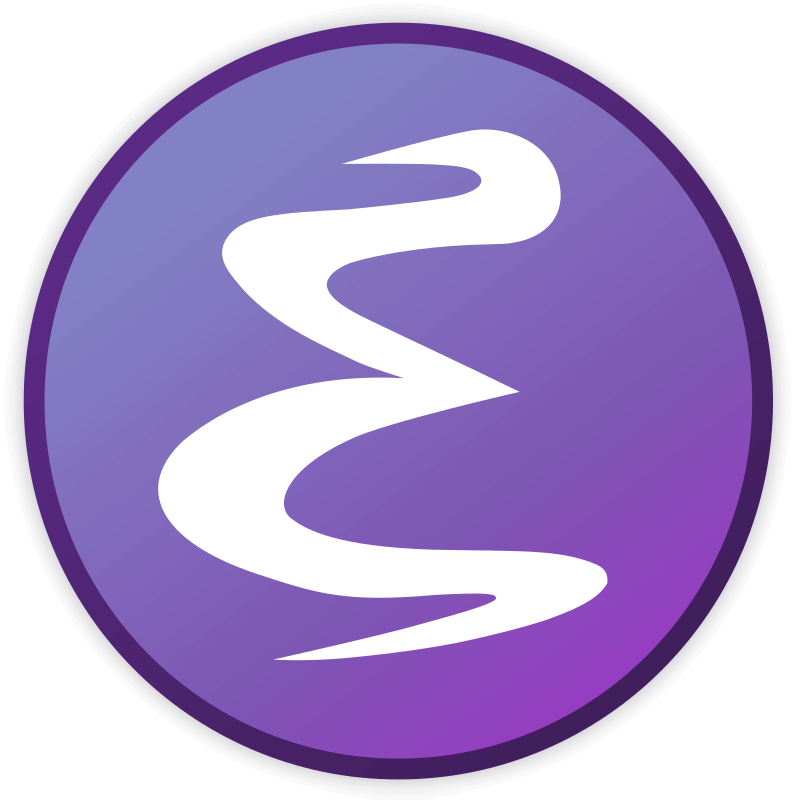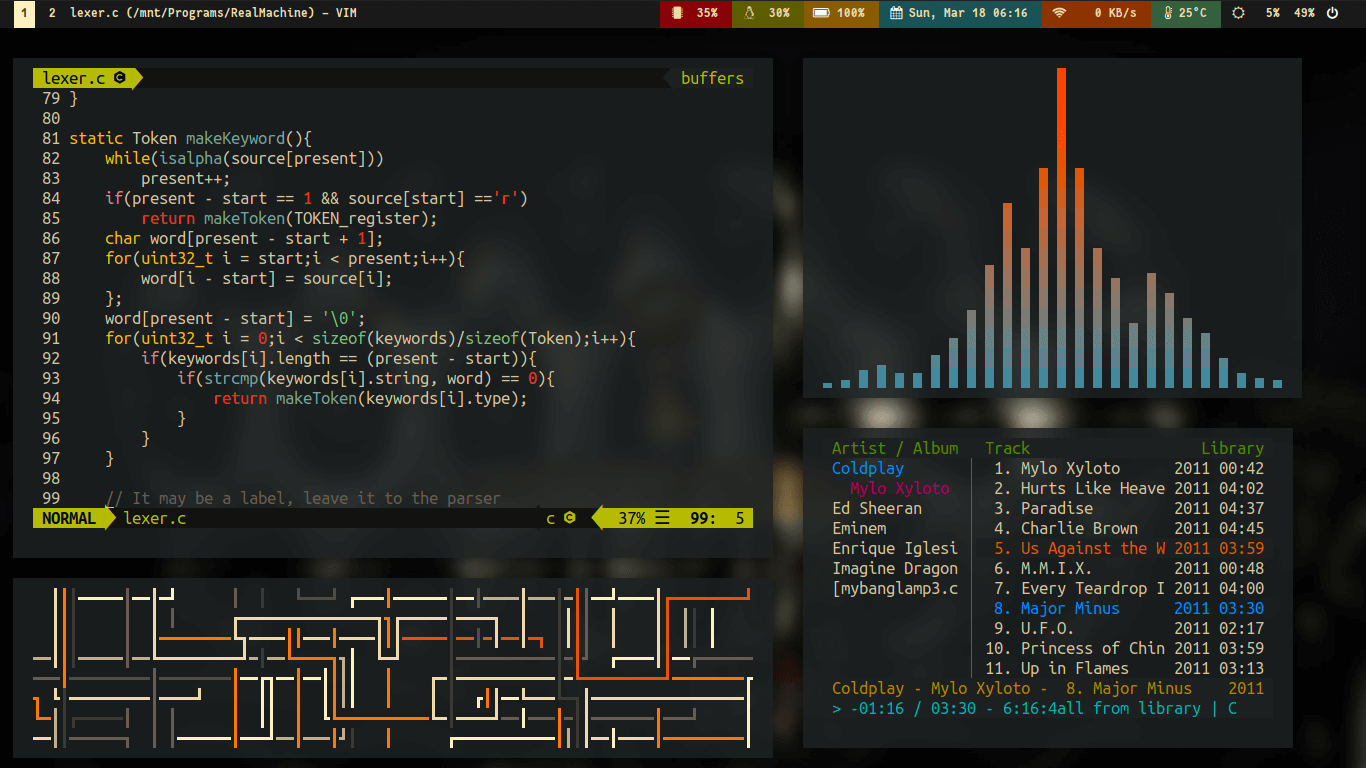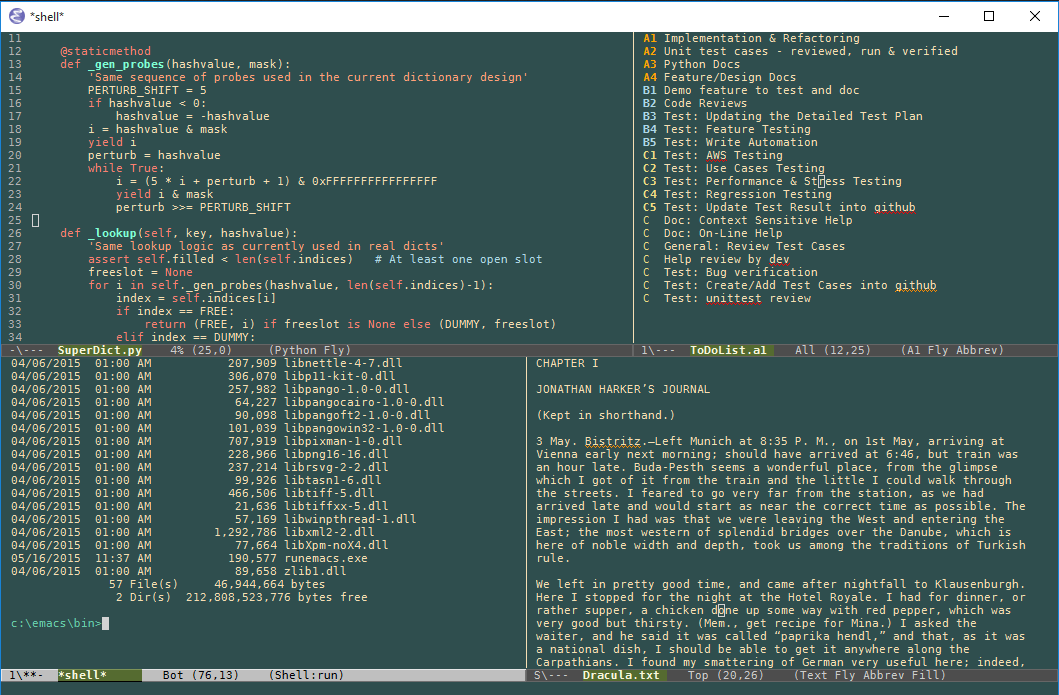Emacs or Vim? Your choice entirely depends on you and your requirements. Both are customizable and have their own user base. Though they have strong tools, the basic difference between the two is how you intend to use them and what will be the best workflow for you—whichever tools you find most convenient for you.
Emacs has more customization and ease of use; it also has built-in support for C, C++, Python, Java, JavaScript, Ruby, Perl, PHP, Lisp, Scheme, Haskell, Go, Rust, Swift, TypeScript, HTML, CSS, SQL, Lua, Kotlin, R, Julia, Shell Script (Bash, Zsh), Markdown, YAML, JSON, XML, OCaml, Erlang, Elixir, F#, Fortran, COBOL, Prolog and you can customize the software to your needs. It also has a scripting language called Emacs Lisp to customize the editor. To use the software can be uphill task however; being a very hard program you will need a long time to learn it. But once you get hooked into it you can channel your skills into productive work because of its advanced tools.
Vim feels more down to earth and minimalist, with speed and efficiency as the main concern. Its modal nature of editing, with modes as input mode, normal mode and visual mode makes the program unique. Once used correctly it’s highly efficient. It also has an interface that gets around text editing using keyboard shortcuts and expandable to users’ needs. A big plus is that it has an active community that contributes to fixing bugs and features. If you want a more low-key and slightly faster program I recommend you go with it.
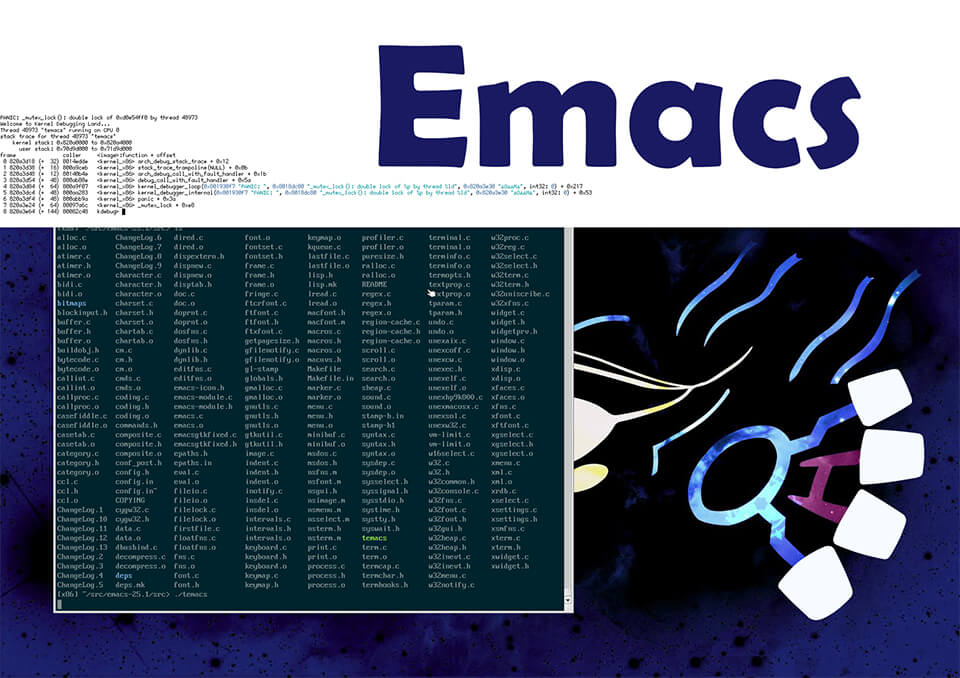
See the differences below:
| Feature | Emacs | Vim |
|---|---|---|
| Design | Flexible and customizable | Minimalist and fast |
| User Interface | Graphical interface (GUI) and terminal | Terminal-based, modal editing |
| Customization | Extendable with Emacs Lisp | Customizable with plugins and configurations |
| Learning Curve | Steep, can be challenging for beginners | Faster to learn, but requires understanding modal structure |
| Modes | Works in a single mode | Modal editing (Insert, Normal, Visual Mode) |
| Target Users | Developers, writers, researchers | Programmers, system administrators |
| Speed | Generally slower | Fast and efficient |
| Community | Large and active, constantly updated | Active and strong, continuously developed |
| Language Support | Supports many languages and tools | Supports many languages and tools |
So, is Emacs still used?
Yes, Emacs is still used with relatively active development. It has a large user base especially among programmers, writers and open-source community. Though it’s been around for a long time this venerable text editor is still very much relevant. One of the main reason for Emacs’s popularity over the years was its extensibility. But if you try to learn Vim as an alternative it will take you much less time. So I would say for a pure beginner Vim is the way to go.
Gallery:
